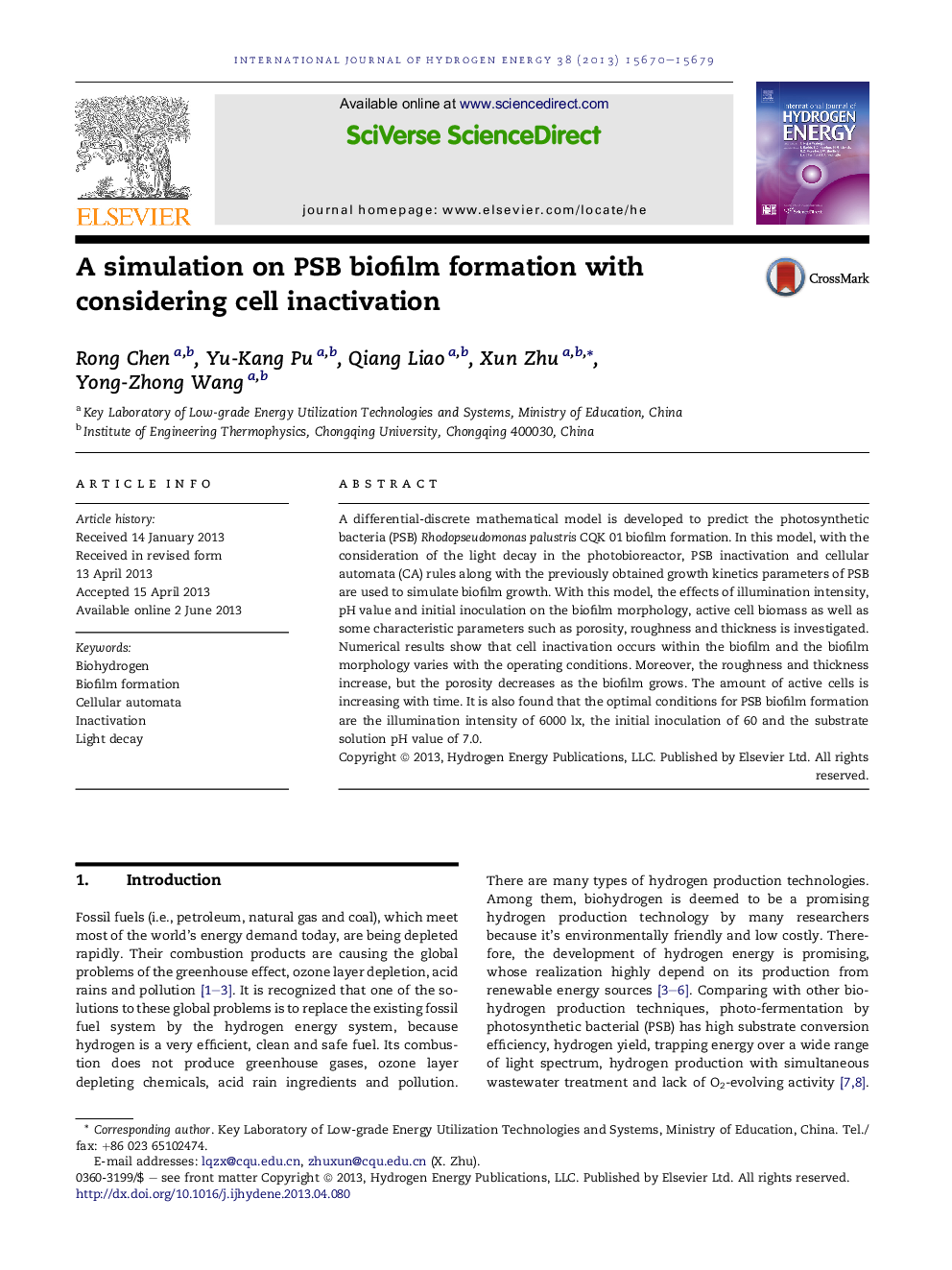| Article ID | Journal | Published Year | Pages | File Type |
|---|---|---|---|---|
| 7721586 | International Journal of Hydrogen Energy | 2013 | 10 Pages |
Abstract
A differential-discrete mathematical model is developed to predict the photosynthetic bacteria (PSB) Rhodopseudomonas palustris CQK 01 biofilm formation. In this model, with the consideration of the light decay in the photobioreactor, PSB inactivation and cellular automata (CA) rules along with the previously obtained growth kinetics parameters of PSB are used to simulate biofilm growth. With this model, the effects of illumination intensity, pH value and initial inoculation on the biofilm morphology, active cell biomass as well as some characteristic parameters such as porosity, roughness and thickness is investigated. Numerical results show that cell inactivation occurs within the biofilm and the biofilm morphology varies with the operating conditions. Moreover, the roughness and thickness increase, but the porosity decreases as the biofilm grows. The amount of active cells is increasing with time. It is also found that the optimal conditions for PSB biofilm formation are the illumination intensity of 6000 lx, the initial inoculation of 60 and the substrate solution pH value of 7.0.
Related Topics
Physical Sciences and Engineering
Chemistry
Electrochemistry
Authors
Rong Chen, Yu-Kang Pu, Qiang Liao, Xun Zhu, Yong-Zhong Wang,
